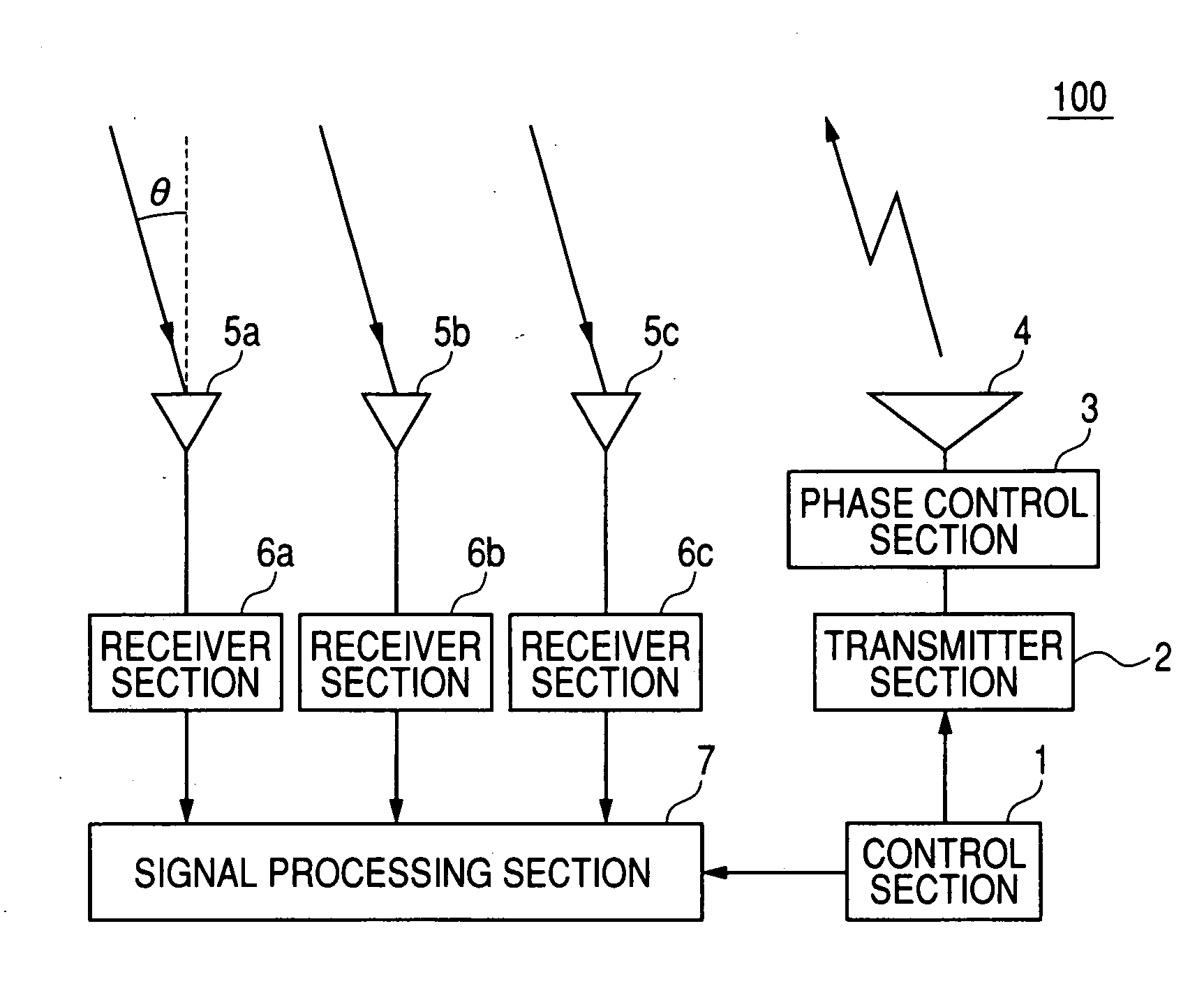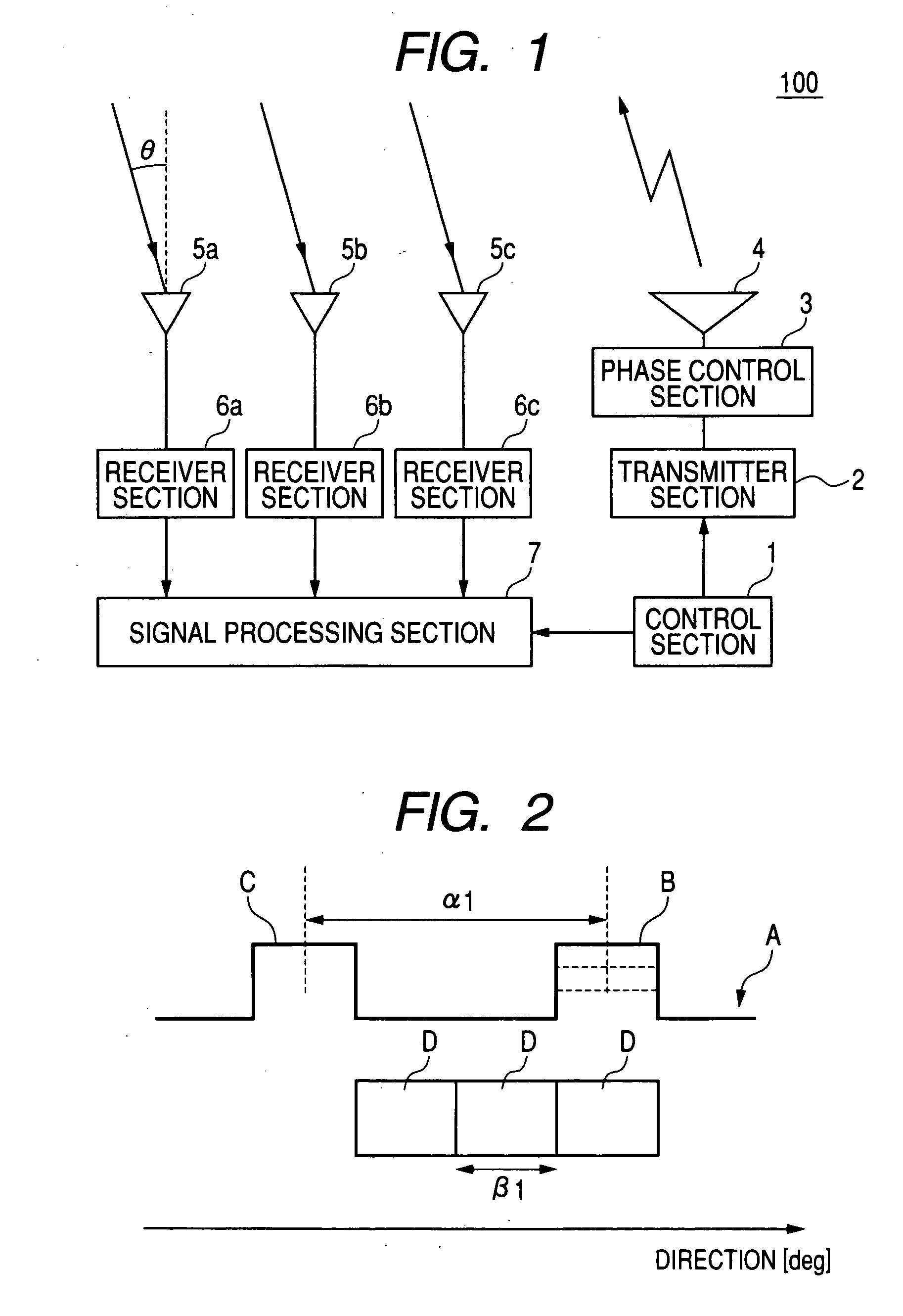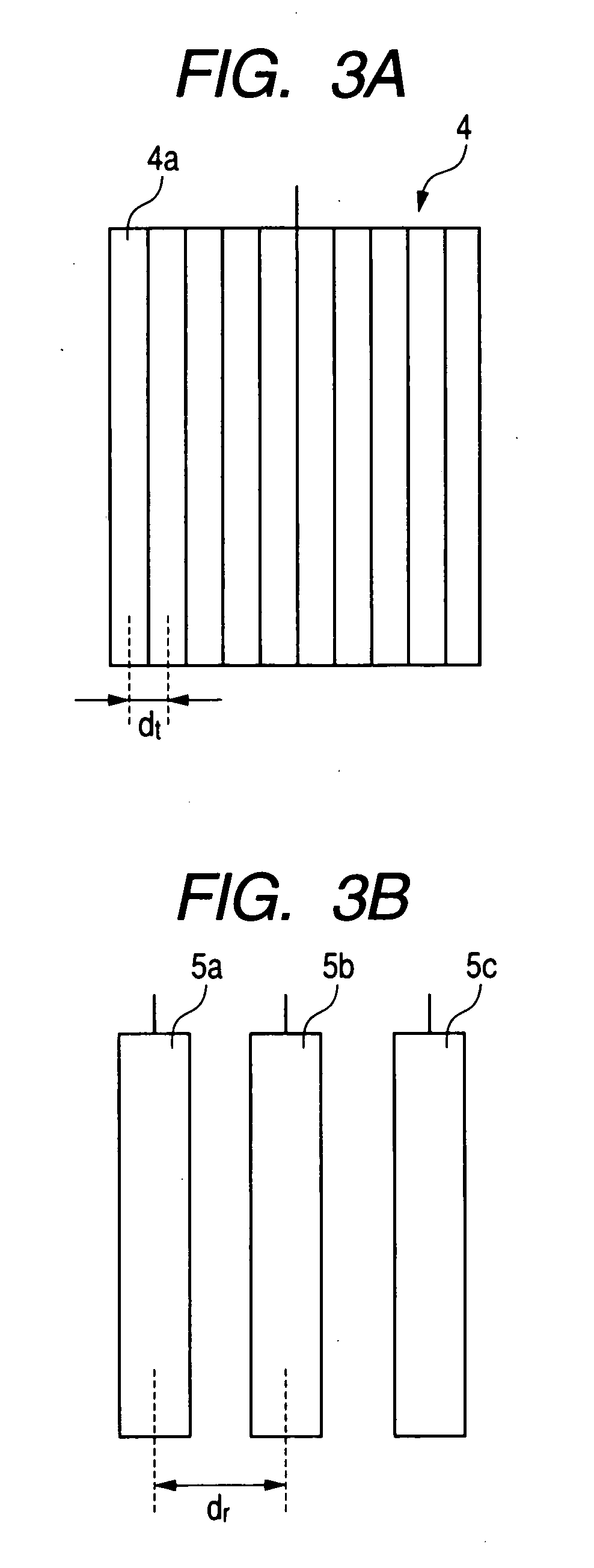Radar apparatus configured to suppress effectes of grating lobes upon detection of direction of target based on phase difference between received reflected waves
- Summary
- Abstract
- Description
- Claims
- Application Information
AI Technical Summary
Benefits of technology
Problems solved by technology
Method used
Image
Examples
first embodiment
Alternative Form of First Embodiment
[0082]With the first embodiment described above, a target can be detected within a detection range whose extent exceeds one foldover period β1. However the invention is equally applicable if the detection range does not exceed β1.
[0083]In that case too, effects of grating lobes upon target direction detection can be eliminated, i.e., similar effects to those described above can be obtained for a radar apparatus having an electronic scanning transmitting antenna and a plurality of receiving antennas, if the antennas are configured such that the relationship α1=(k×β1) is satisfied, where (01 between respective directions of the main lobe and a grating lobe of the transmitted beam, but is no greater than α1. That is, the pitch of the elements of the transmitting array antenna and the pitch of the receiving antennas are respectively determined such as to satisfy that relationship, as described for the first embodiment.
[0084]With such a radar apparatus...
second embodiment
[0086]A second embodiment will be described, which employs similar principles to those of the first embodiment above for suppressing adverse effects of grating lobes upon target direction detection. Only the features of difference with respect to the first embodiment will be described. With the first embodiment, the pitch of the elements constituting the transmitting antenna 4 (array antenna) and the pitch of a plurality of equidistantly-spaced receiving antennas 5a, 5b, 5c are respectively determined such as to satisfy a predetermined relationship, for suppressing the effects of grating lobes in the beam pattern of the transmitting antenna. With the second embodiment, a plurality of transmitting antennas are utilized, spaced apart with a fixed pitch, while the receiving antenna is an array antenna.
[0087]In that case, the directivity characteristic of the receiving antenna is controlled by appropriate phase control of the received signals from the elements of the receiving antenna (...
PUM
 Login to View More
Login to View More Abstract
Description
Claims
Application Information
 Login to View More
Login to View More - Generate Ideas
- Intellectual Property
- Life Sciences
- Materials
- Tech Scout
- Unparalleled Data Quality
- Higher Quality Content
- 60% Fewer Hallucinations
Browse by: Latest US Patents, China's latest patents, Technical Efficacy Thesaurus, Application Domain, Technology Topic, Popular Technical Reports.
© 2025 PatSnap. All rights reserved.Legal|Privacy policy|Modern Slavery Act Transparency Statement|Sitemap|About US| Contact US: help@patsnap.com



